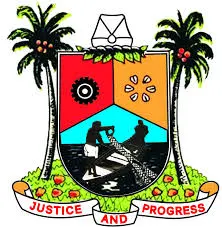The Joint Admissions and Matriculation Board (JAMB) has clarified that the recently adopted 140 cut-off mark for admissions to Nigerian universities is not uniform for all the institutions.
JAMB said a 140 score in the Unified Tertiary Matriculation Examination (UTME) is only a minimum benchmark for universities to consider for admissions.
The board added that it has no hand in setting the benchmark, noting that it was a collective decision among all tertiary institutions in the country.
This clarification, contained in a statement by Fabian Benjamin, JAMB’s head of public affairs and protocol, was in response to a comment by a former President of the Academic Staff Union of Universities (ASUU), Nasir Fagge, in an interview with the News Agency of Nigeria (NAN).
Mr Fagge had during the interview suggested that JAMB, as an agency, decides the uniform minimum UTME points required for admission.
“Where in the world will you have a particular outfit to determine what is best for institutions of learning in terms of admission?” he had said in the interview.
“How Cut-off points are set”
Mr Benjamin said before the commencement of the admission process every year, all institutions write to JAMB, stating the preferred cut-off points for their institutions.
He added that the minimum cut-off point means that no institution can adopt the cut-off point below the agreed minimum point –which is 140 in 2022.
He said: “More than 50 per cent of the universities had submitted in writing their minimum scores of 200 and above to the Board for presentation to the meeting for the purpose of deliberation. The implication of this process is that no institution would be able to admit any candidate with any score below what they had submitted as their minimum score.
“The Board does not and has never determined any uniform national Unified Tertiary Matriculation Examination (UTME) scores otherwise known as cut-off marks by the general public for any tertiary institution because, in actual sense, there are no uniform national UTME scores,” he said.
Further clarification
Meanwhile, Mr Benjamin has clarified that all institutions have their individual cut-off points for admissions irrespective of the agreed cut-off points. However, no institution can go below the agreed cut-off point of 140.
“Many candidates and some members of the general public have been under the erroneous impression that there is a minimum national UTME score set by the Board, which they also refer to as “cut-off point,” he said.
“The truth is that there is nothing like a national minimum UTME score for all Universities, Polytechnics or Colleges of Education in Nigeria as it is only individual institutions which set their minimum entry scores based on their peculiarities.”
“After this process, there is usually a policy meeting with heads of all Nigerian tertiary institutions where the minimum cut-off point will be d ecided,” he said.
He added: “It should, therefore, be noted that decisions at the annual Policy Meeting on Admission do not reduce these minimum prescriptions emanating from the institutions except in the few situations where these institutions had submitted minimum UTME scores that fall below what the Policy Meeting considers as the acceptable minimum score. That is where the much-talked-about 140 came from, which is but a baseline that no institution should cross.”
Admission Process
JAMB also noted that the process of admission through the Central Admission Processing System (CAPS) is decided by the criteria listed by the institutions themselves.
He noted that the board has no hand whatsoever in deciding the students to be admitted to any of the institutions.
He said: “The Board has no role whatsoever in the decision of the institutions to determine how or with what criteria they want to admit. The role of the Board is to ensure that the goal post is not shifted in the middle of the game.”
JAMB added that the process of admission is not determined solely by UTME scores.
“UTME score is just one of the two or three scores that are generally cumulated to obtain the eventual aggregate score and ranking of the candidates by most institutions.
“Other parameters are Post-UTME/Post-A/L qualifications screening test score; O/L grade score; and in some cases, physical test (such as applicable in the Nigerian Defence Academy/Police Academy).
Therefore, it is the score from all these segments that are added together to have an eventual ranking table or “cut-off” score.”
About Author










































